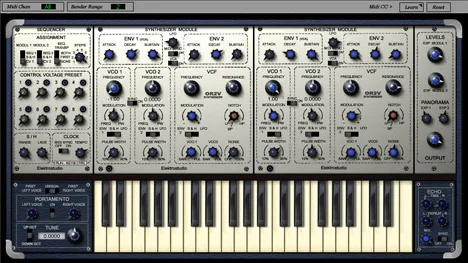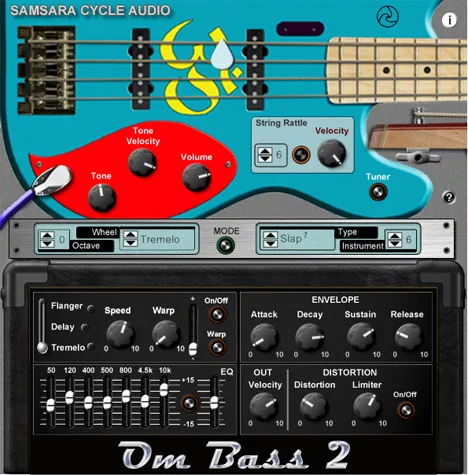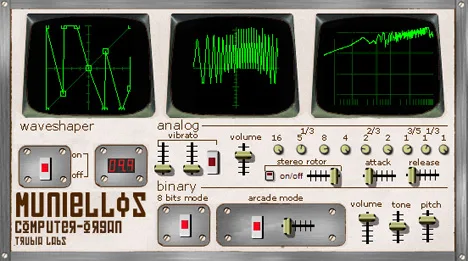Meet OR2v: Reviving the Oberheim Two Voice Legend in Digital Form
The world of vintage synthesizers is filled with instruments that have left an indelible mark on music history. Among them, the Oberheim Two Voice holds a special place – an analog duophonic beauty, known for its warm, fat sound and unique character. Now, thanks to the developers at Elektrostudio, this iconic instrument is available in a convenient VST plugin format – OR2v.
OR2v is not just an emulation; it’s an attempt to recreate the very soul of the original Oberheim Two Voice, giving modern musicians and producers the opportunity to dive into the world of 70s analog synthesis without leaving their DAW. This plugin is ideal for creating deep basslines, ringing leads, atmospheric pads, and experimental soundscapes that carry authentic vintage charm.
The Heart of the Synthesizer: Oscillators and Filter
At the core of OR2v’s sound are two independent “voices,” each essentially a miniature analog synthesizer (SEM module in the original). This allows for achieving the rich and complex timbre characteristic of duophonic instruments.
- Two Voices (Two SEM Modules): Each voice has its own set of parameters for flexible synthesis.
- Duophonic Architecture: The ability to play two notes simultaneously, each with a unique timbre.
- Oscillators: Two oscillators per voice with the option for synchronization (sync) and pulse-width modulation (PWM). Available waveforms: sawtooth (saw), pulse/square (pulse), and noise.
- Morphing Filter: A unique filter that allows for smooth transitions (morphing) between different types: low-pass (LPF), high-pass (HPF), band-pass (BPF), and notch. This opens up huge possibilities for shaping the timbre.
- LFO: One low-frequency oscillator with a sine waveform, which can add vibrato, tremolo, or filter modulation.
- Envelopes: Two ADS (Attack, Decay, Sustain) envelope generators for controlling volume and filter.
This combination of synthesis elements allows for creating both classic analog timbres and exploring new, unexpected sounds.
The Sound Sequencer: Built-in Sequencer
One of the most interesting features of the original Oberheim Two Voice, which is recreated in OR2v, is the built-in step sequencer. Or rather, a dual step sequencer.
- Dual Step Sequencer: Allows you to program independent sequences for each of the two voices or use them together for more complex patterns.
- 8 Steps: Each sequence can contain up to 8 steps, ideal for creating arpeggios, rhythmic figures, or experimental melodies.
The sequencer significantly expands OR2v’s creative potential, making it not just a tool for creating sounds, but a whole source of musical ideas. It encourages experimentation and can be a starting point for writing a track.
Additional Features and Compatibility
OR2v emulates the feel of playing the original instrument’s keyboard, including even such a detail as the lack of velocity and pressure sensitivity on the 37-key keyboard. This adds authenticity to the vintage experience.
The plugin is available in VST format and is compatible with the Windows operating system (Win32). This makes it easily integrated into most popular DAWs on this platform.
Elektrostudio OR2v is a great chance to add the classic analog sounds of the Oberheim Two Voice to your musical palette. Its intuitive interface (reflecting the logic of the original instrument), rich synthesis capabilities, and powerful sequencer make it a valuable tool for both vintage sound lovers and those seeking unique timbres for their music. Immerse yourself in the world of analog classics with OR2v!



